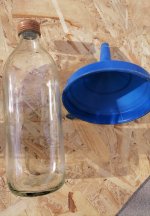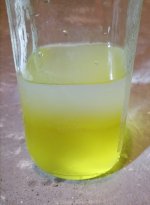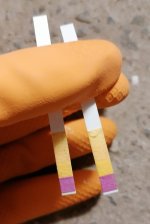4-MMC (mephedrone) synthesis. Bromination in dichlormethane.
CristalKing
🥷 RESIDENT 🥷
kinshasa99
🥷 RESIDENT 🥷
kinshasa99
🥷 RESIDENT 🥷
CristalKing
🥷 RESIDENT 🥷
CristalKing
🥷 RESIDENT 🥷
kinshasa99
🥷 RESIDENT 🥷
kinshasa99
🥷 RESIDENT 🥷
Hello, please, translate you message to English and respect our rules. You can't use any language except for in common public section of BB forum. You can use your language in your country local group or in PM. Further messages on different language will be deleted.
breathing.fire
🥷 RESIDENT 🥷
subzero013
🥷 RESIDENT 🥷
Hello, you could not tell me regarding one moment in the synthesis. I spend sourness under the water layer, to the free base in the DCM I add water and hydrochloric acid, then I separate the water layer with the hydrochloride of Mephedron dissolved in it and work with it further. The water layer with hydrochloride dissolved in it is transparent, but has a yellow tint and has an smell of acid, even after 3 multiple of the DCM. How can such an aqueous solution be cleaned? The smell of acid appears due to an excess of HCL, this is obvious, you can fight this amount of acid, but how to remove the yellow color? Acid alkaline extraction? If it can be used in this case, then tell me the proportion and which alkali is better to use?
About Us
Our team brings together the best specialists from different fields.
We are ready to share our experience, discuss difficult issues and find new solutions.







